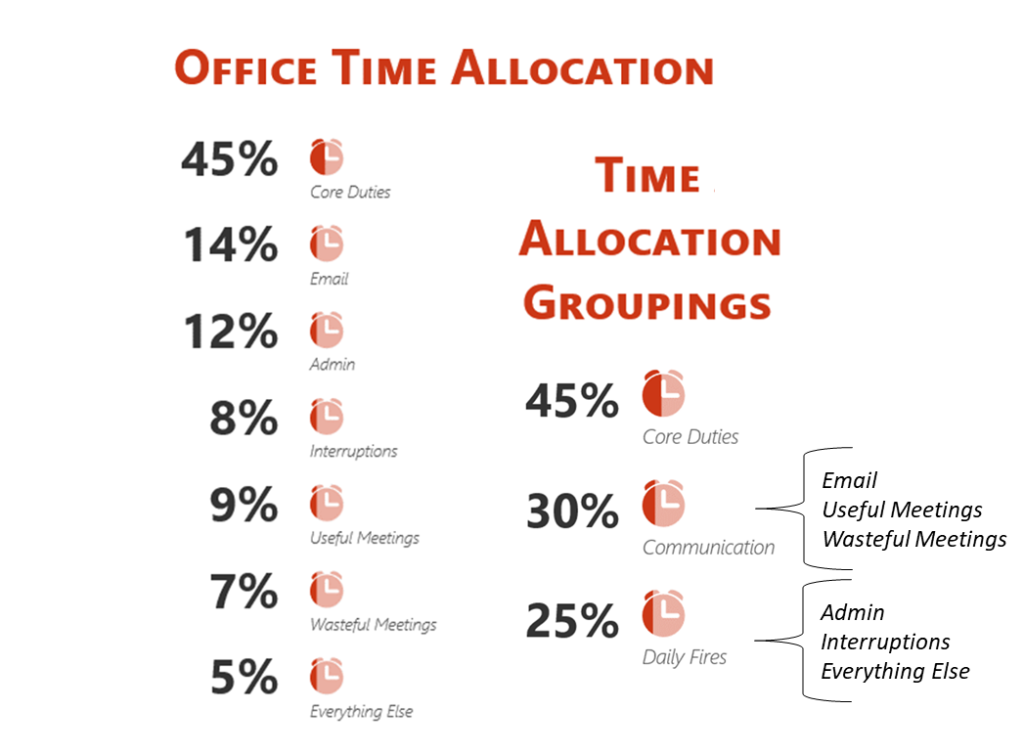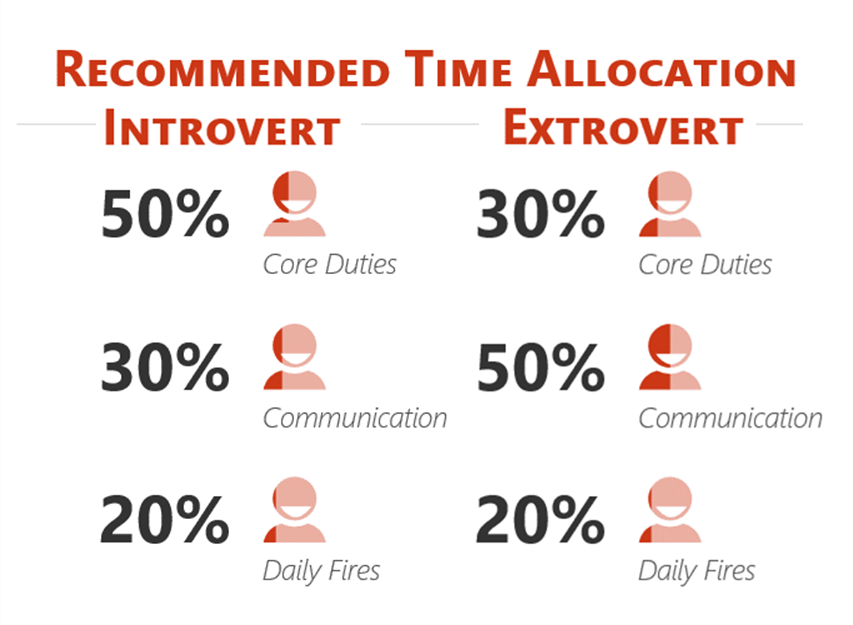New Normal
While many say they prefer to work remotely – managing remotely is a much bigger challenge. The recent stay at home orders across the country have given employees, managers and employers a crash course into the realities of remote workplace productivity. Now that the initial dust has settled of IT departments scrambling to make every kitchen, den and home office a viable workspace we can now turn to the nuances of making sure we perform and manage in ways that are in alignment with the differing personalities and workplace practices of those we lead in this new “normal.”
Francesca Gino, a Harvard Business School behavioral scientist told the magazine Fast Company, “by increasing our awareness of where we stand in terms of introversion and extroversion, we can develop a better sense of our tendencies, manage our weak spots, and play to our strengths.” If you have direct reports this level of awareness must also be applied to those you manage. It is not a one-size-fits-all situation we are in and our success lies within acknowledging the differing needs of those we lead. Whereas some employees can thrive in lightly managed scenarios others will need daily video check ins to keep them engaged and at their highest and best use of time. Knowing and adapting to those differences can be the difference between a successful transition and one fraught with distrust and poor performance.
Behavior versus Motivation
Introverts are often mislabeled as anti-social, shy or socially backwards. Neuroscientists define shyness as a behavior–something akin to being fearful in social situations; however, introversion is defined as a motivation that is ruled by how much an introvert wants and needs to be in such social situations. In the workplace introverts are defined by the fact that they tend to gravitate to solo or small group work practices whereas extroverts gravitate to larger and more collaborative work practices.
Introverts tend to have more energy and be more productive when left alone. Whereas extroverts require external stimuli for their energy to perform. While both talented and productive in their natural state, when forced to work outside their preferred space they tend to lose energy, inspiration and work performance falters. Being an introvert does not mean that you can’t or don’t work well with larger groups and being an extrovert doesn’t mean you can’t be productive on your own. Many of your employees must maintain near-constant engagement with clients and show no indication that these interactions are draining (introverts) as opposed to energizing (extroverts). You probably couldn’t tell the difference between most introverts and extroverts you work with so why dig into this designation? In the remote workspace we find ourselves in it is important to understand your employees natural productive state and devise strategies to make the best out of their skills and energy from afar.
Time Management
A critical component in remote personality management is mindful time management. We have default behavioral tendencies that we unconsciously fall into in the absence of mindful time management. According to a survey of 2,000 office workers conducted by management software developer AtTask and market research firm Harris Interactive, employees say they spend less than half of their days in the office on their core job duties. Broken into the 3 common groupings of core duties, communication and daily fires you can see that employees struggle in their normal environment to skillfully manage their time for maximum efficiency. The unplanned transition into a remote workplace can trigger a shift in an employee’s behavior based on their core motivations that make time management an even bigger struggle. However, the extra freedom and control a remote workplace offers can offer new opportunities if harnessed correctly to take advantage of the unique skills sets your introverts and extroverts inherently have.

Introverts, left to their own tendencies as motivated by solo or small group work practices, will tend to gravitate toward project work; spending most of their time (up to 70%) in task-oriented pursuits; taking time and attention away from communication (as low as 20%) and attention to daily surprises and interruptions which gets very little attention (as low as 10%). The sudden shift to working at home can also trigger extroverts to alter their time management balance.
With their natural gravitation to larger and more collaborative work practices the isolation of a remote office can cause them to lose motivation and seek increased opportunities for personal connection (up to 35%) over the fulfillment of their core duties and responsibilities (as low as 30%). They will inherently avoid mundane project work and in the absence of communication opportunities can be easily tempted away to jump on every fire, perceived or real, the normal workday may hold (up to 35%).

Maximizing performance in a remote workplace for both introverts and extroverts can be as simple as a realignment in their time management. A remote workplace environment can be a perfect occasion to give introverts an opportunity for project management. The increased time and space the remote workplace has opened up for an introvert combined with their propensity to be highly motivated by priority alignment and task completion makes them an invaluable asset to successfully tackle and independently complete larger projects that may have been languishing in the background. The remote workplace is an opportunity to utilize your extroverts to brainstorm with colleagues, come up with creative solutions to reoccurring problems and lead planning initiatives. Extroverts can be incredible leaders within the remote workspace focusing on unique ways to connect with customers and effortlessly improving internal communication. Managers of both introverts and extroverts should be vigilant that daily fires and distractions are part of any position and should neither be ignored as introverts are want to do, nor overly focused on, as is an introvert’s tendency.

Managing an Introvert Remote Personality
In a remote workplace introverts should batch interactions into block segments reserving large sections of their calendars for dedicated thinking and project work time. In the management of introverts, you should encourage this time management and create an expectation that the rest of the team respect solo work time blocks just any other appointment. Your colleagues wouldn’t schedule a meeting over an appointment you had with a client but often feels no remorse about filling a colleague’s blocked work time – viewing it as flexible and non-essential. To an introvert these time blocks are where you will see them at their most productive.
Introverts managing other introverts may seem like a perfect match but they may be so alike that they struggle to keep personal interaction a priority and allow too much time to pass between interactions which can negatively impact the speed and quality of projects and group work. An introvert in long periods of isolation can start to resemble the traditional definition of an introvert, becoming anti-social and more awkward in their interactions. As a manager of an introvert you must ensure that there are regularly scheduled eye-to-eye interactions to avoid them disappearing for long periods of time – lost in their own priorities.
Trust is the foundation of successfully managing an introvert. Trusting that an introvert is utilizing their time blocks effectively without check-ins that introverts find to be at best unnecessary and at worst a distraction can be hard for hands-on managers. An introvert won’t necessarily find inspiration in daily video calls but will appreciate routine one-to-one check-ins on project status and prioritization of tasks.
Managing an Extrovert Remote Personality
For extroverts, who find energy in person-to-person interaction, the isolation of remote work can be draining, and usually highly productive people can have trouble staying motivated and independently setting and fulfilling goals. Extroverts can also be easily distracted in long periods of isolation in their subconscious attempt to engage. Extroverts must recognize that their energy and creativity is often found in the company of others.
Just like introverts, extroverts can find help in proper time management. To combat periods of isolation that can negatively impact your efficiency and productivity extroverts should schedule regular interactions throughout the day in small bursts as opposed to the larger block segments of the introvert. Managing an extrovert involves supporting their need for interaction by connecting with them consistently and frequently. The interaction does not have to be large spans of time – even a daily 5-minute check-in via phone is helpful although visual interaction must also be a priority and at minimum should be had twice a week.
Encourage your extroverts to schedule remote work hubs where they are working with other colleagues at the same time on the same project via remote tools like Zoom, Skype and FaceTime. This should not be confused with a project meeting – but more like an active workshop where you work independently but also together. This allows not just for social interaction that many extroverts need regularly but works for introverts as well. Remote work hubs place structure around project communication which can achieve quicker start to completion times on projects that traditionally languish for weeks in meetings and solo tasks.
Extroverts managing extroverts can lead to remote interactions which the rest of the team can deem unproductive – a handful do much of the talking and may even digress into too many unrelated topics – dragging calls way past their usefulness. Introverts want a structured, productive call with a set timeframe and outcome. Extroverts want a connection point that inspires them to finish up a project, tackle a new problem or energy to deal with an unwanted task. To achieve balance for the team all group interactions should be scheduled with a set start and end time that you adhere to. Always start on time, waiting on the line for everyone to straggle in can annoy people and waste time, bothering both introverts and extroverts. In turn always end on time – if you have not finished set up a new time to come back to the topic. Participants should be able to trust that the time scheduled is the actual time investment being asked for. Structure is the name of the game in remote interaction for all personality types and clear expectations of timing, purpose and deliverables for meetings makes everyone happier.

We can help.
Request a copy of our recommended exercise your managers can do with their staff:
[wpforms id=”1950″ title=”false” description=”false”]
